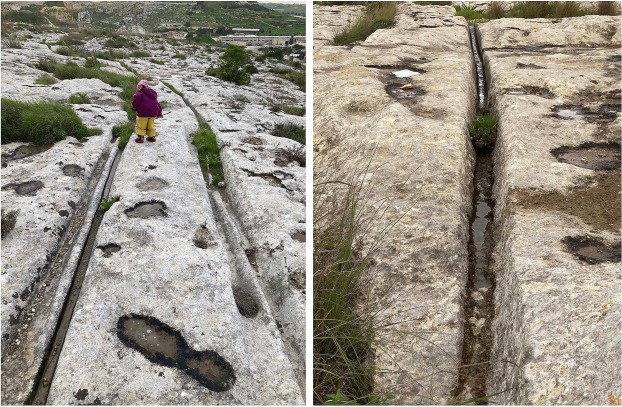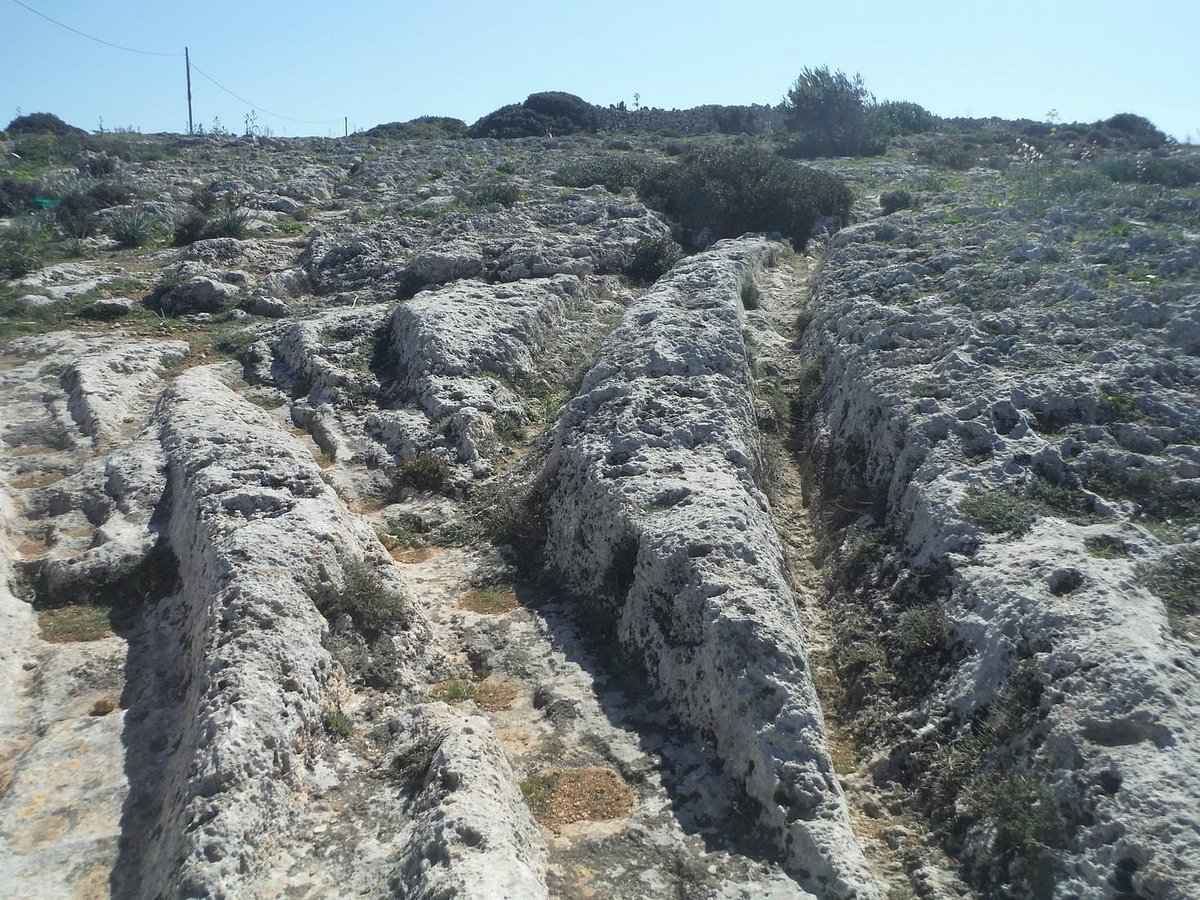The Maltese Archipelago, nestled in the central Mediterranean, is home to a fascinating and enigmatic archaeological phenomenon: the “cart ruts”. These pairs of incised parallel grooves in the bedrock have intrigued archaeologists, geographers, and the general public for generations. Despite extensive study, the age, purpose, and formation processes of these cart ruts remain a subject of debate. This article delves into the various theories surrounding these mysterious grooves, their morphological variability, and the ongoing quest to understand their origins and functions.
The Ubiquitous Cart Ruts of Malta

A Global Rarity
While cart ruts have been reported in various parts of the world, the Maltese Archipelago boasts an unparalleled concentration of these features. Found across the length and breadth of the islands, from high elevations to below sea level, these ruts are primarily located on Coralline and Globigerina limestone formations. Their profusion and variety make Malta a unique case study for understanding this intriguing phenomenon.
Morphological Variability
One of the most striking aspects of the Maltese cart ruts is their morphological variability. The ruts range from wide, deep, and flat-bottomed forms to deep V-shaped and shallow parallel sets. This variability complicates efforts to link different forms in a cohesive gradient, especially when many ruts are partially obscured by sediment or vegetation. The diversity in shapes at single localities suggests that these ruts may have served different functions or been formed through varying processes.
Theories Behind the Cart Ruts

Vehicular Origin Hypothesis
The most widely accepted theory posits that the cart ruts were formed by erosion from wheeled vehicles, such as carts. This hypothesis is supported by the observation that ruts in some locations traverse high points in the landscape, which would be impractical for water capture or other non-vehicular purposes. For instance, at Misraħ Għar il-Kbir, ruts extend over a high point, making the notion that they were designed for something like water capture unlikely.
Alternative Hypotheses
Other theories suggest that the ruts were intentionally cut into the rock to facilitate vehicle movement. These hypotheses span a wide range of historical periods and functions, from Neolithic cart usage for soil transport to classical era stone quarrying. However, the morphological variability and topographic settings of the ruts complicate these interpretations.
Morphological Consistency and Implications
Evaluating the morphological variability of the cart ruts is crucial for understanding their origins. Studies suggest that the ruts are fairly standardized in terms of basic measurements such as width and depth. This consistency might indicate a common age and function, although the exact nature of these remains uncertain. The standard gauge of the ruts, strikingly similar to modern railway tracks, has also sparked considerable interest and debate.
The Role of Geomorphological Processes

Limestone Dissolution
Limestone dissolution is another factor that may have influenced the formation and alteration of the cart ruts. In several localities, ruts rise and fall in and out of dissolution features, indicating that geomorphological processes have played a role in shaping them. The extent of soil cover during their use and the possibility of steep hillsides being covered in soil remain unclear, adding another layer of complexity to their study.
Impact of Geomorphological Processes
The bases of many ruts show clear signs of limestone dissolution, with circular hollows indicating the impact of this process. In places where water flows through the ruts after rainfall, associated gravel clasts are also moved, further influencing their shape. While geomorphological processes have undoubtedly contributed to the current form of the ruts, they are unlikely to be the sole mechanism behind their creation.
Key Sites and Their Significance

Naxxar and the Great Fault
The ruts at Naxxar provide vital clues about their possible vehicular origins. These ruts curve uphill, following the gentlest available slope through the Naxxar Gap, a crucial transit point through an east-west escarpment. The strategic importance of this route is underscored by the presence of fortifications built by the Knights of Saint John and the British. However, while these observations support a vehicular interpretation, they do not conclusively determine the ruts’ age or specific function.
Misraħ Għar il-Kbir
At Misraħ Għar il-Kbir, the ruts’ deep, flat-bottomed form on sloping land presents another puzzle. The variability in rut shapes within a single locality adds to the complexity of understanding their formation processes. Detailed on-site studies and three-dimensional analyses of the ruts in their landscape settings are necessary to unravel these mysteries.
Conclusion
The cart ruts of the Maltese Archipelago remain one of archaeology’s most intriguing enigmas. While the vehicular origin hypothesis remains the most plausible explanation, many uncertainties persist. The morphological variability of the ruts, their standard gauge, and the influence of geomorphological processes all contribute to a complex and multifaceted puzzle. Future research, combining detailed field studies and advanced analytical techniques, holds the promise of shedding new light on these ancient grooves. Until then, the cart ruts of Malta continue to captivate and mystify, offering a tantalizing glimpse into the island’s rich and enigmatic past.
